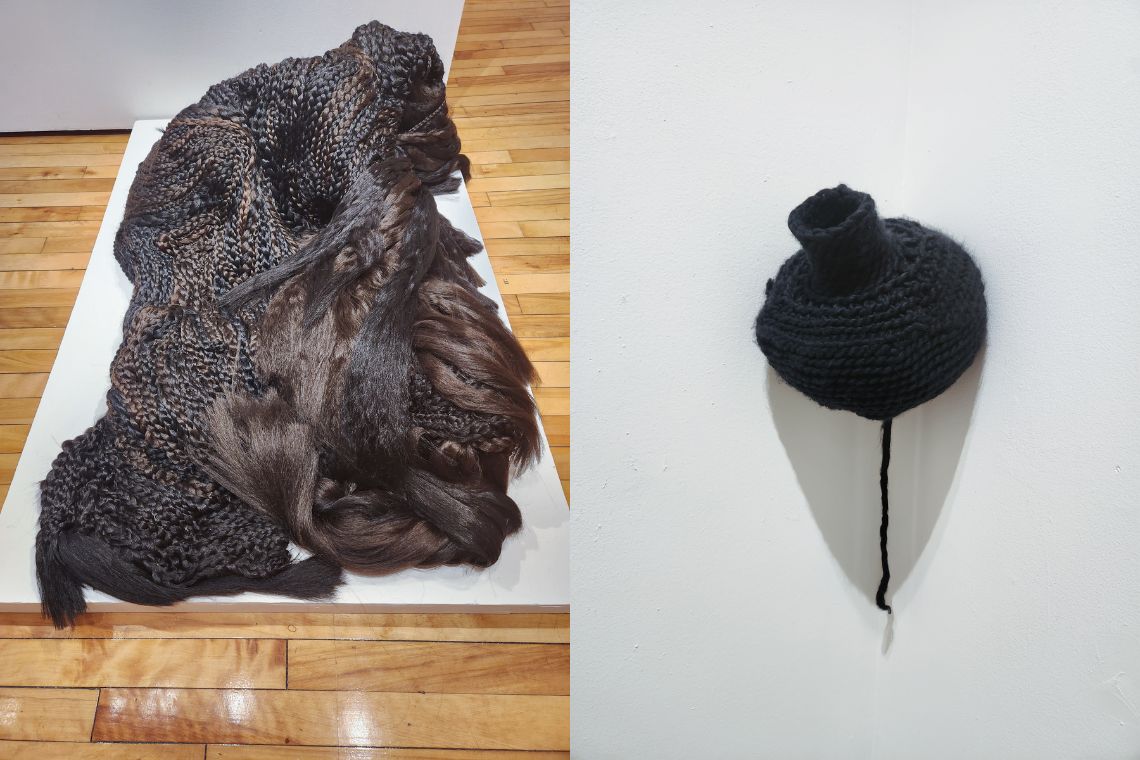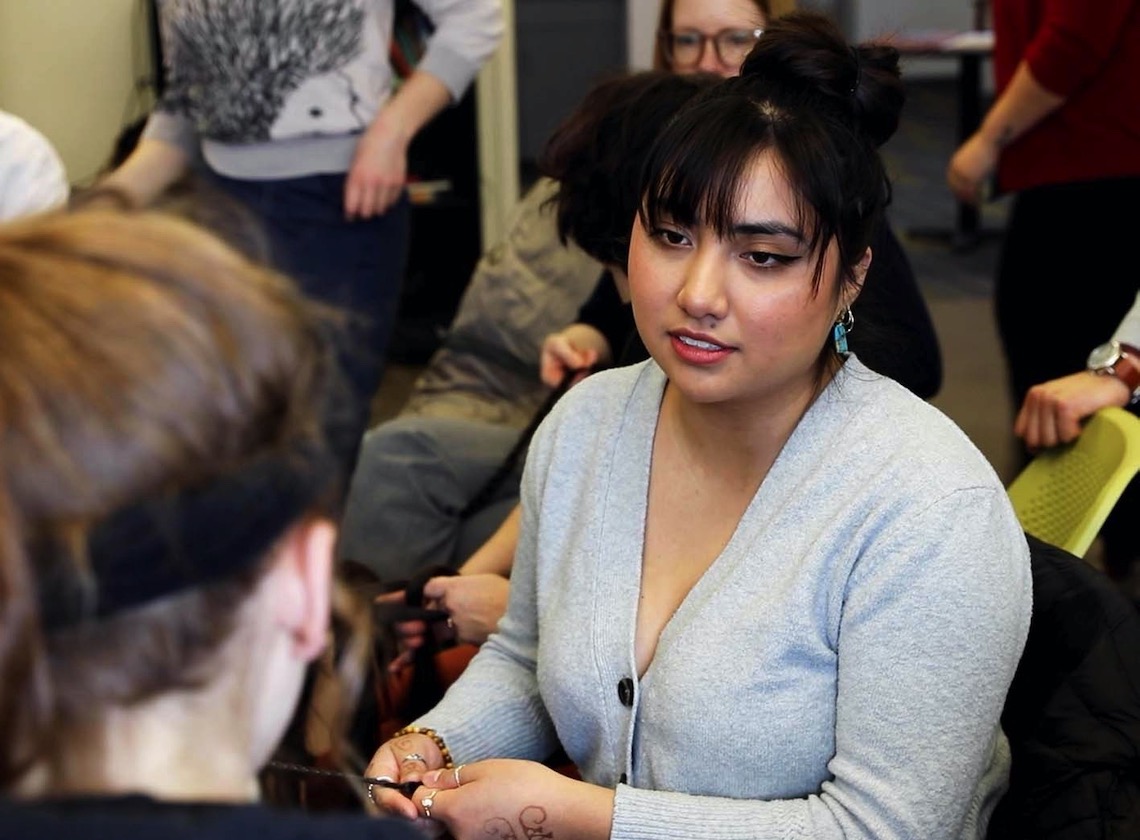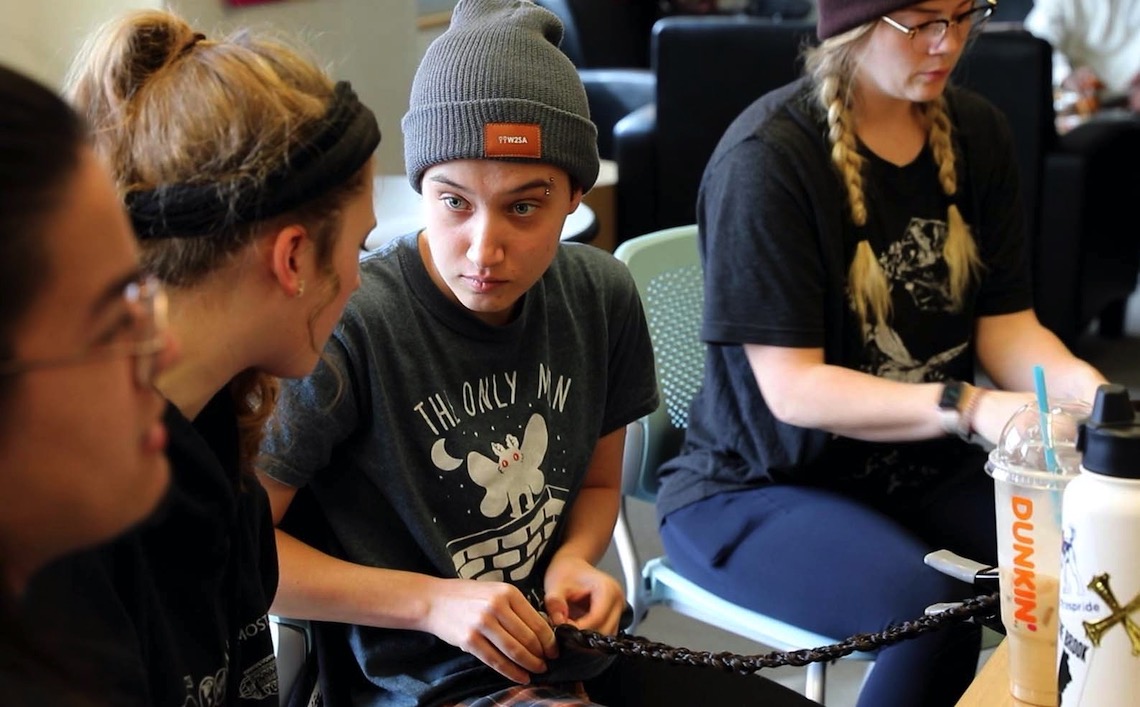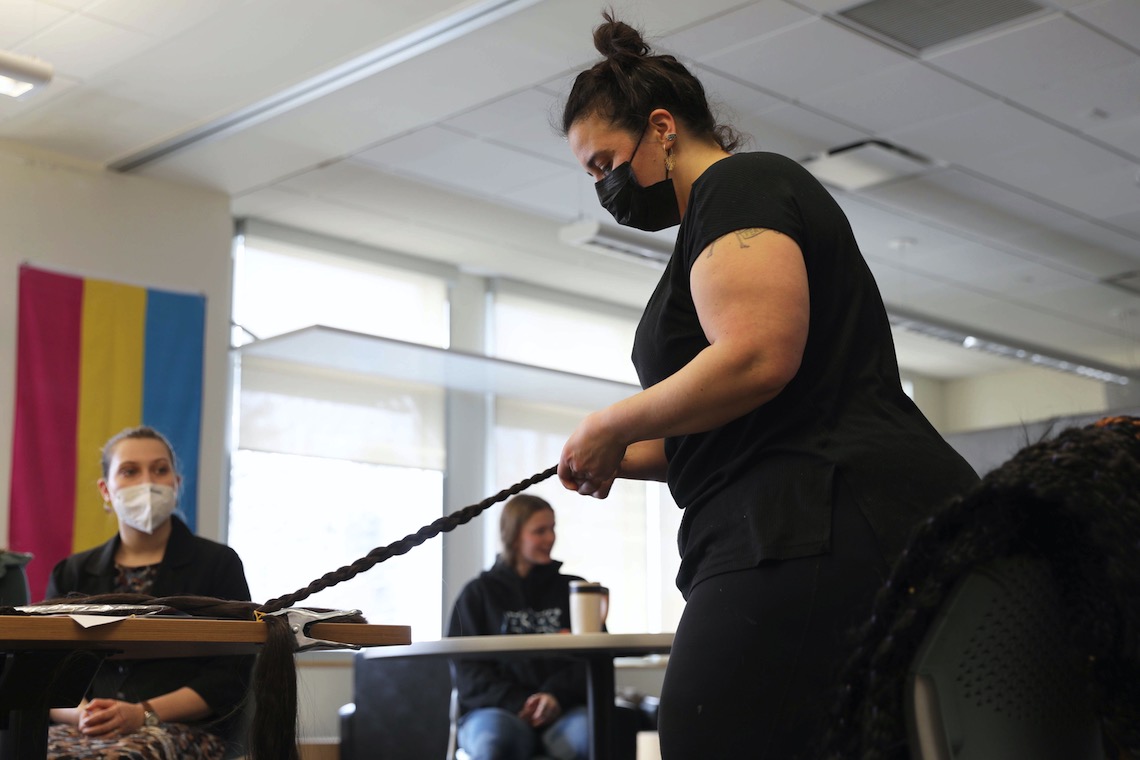Hand over hand, Veronica A. Perez weaves together braids as a creative outlet. With each strand of hair that she pulls, she also pulls on a strand of memory. And the experience only becomes more meaningful when it’s shared.
“Working really closely with the hair, I think, conjures up these memories about identity, about belonging, about acceptance, about power,” Perez said. “I think when people touch and work with it, those memories come back.”

Perez has been plying her craft at the University of Southern Maine over the past several months of the spring semester as an artist-in-residence. Her efforts will culminate with an exhibition titled shadow/echo/memory at the USM Art Gallery in Gorham.
Perez sculpts with hair the way that other artists work with bronze or marble. First, the hair clippings are braided. When she has enough plaits, Perez drapes and coils them across a framework made of wood and chicken wire. The shapes are as irregular and fantastical as the emotions that Perez was feeling when she made them.
“I’ve continued working with hair because I think it’s the best material to evoke, not only the body, but emotion, love, loss, and intimacy,” Perez said.
Perez’s creations are collaborative. Much of the hair that goes into her sculptures comes from communal braiding circles, similar to quilting bees. Perez hosted several sessions on the Portland and Gorham campuses throughout her residency. Anyone was welcome to attend.
The diversity was the point, allowing people to interact across cultures, generations, and economic backgrounds. Different hair textures and styling techniques are often major signifiers of racial identity. The intimacy of braiding side-by-side provides an opening to engage in these sensitive topics that might be difficult in another setting.

It worked for Liliana Sapiel. She is a first-year Political Science major and a leader of the Student Alliance of Indigenous People. Sapiel attended a braiding circle on February 16 in the Portland Diversity Center.
“In a lot of Indigenous cultures, braiding is really sacred. Hair is especially sacred,” Sapiel said.
Those sentiments were passed down to Sapiel from her grandmother. Sapiel used to wear her hair short. Her grandmother urged her to grow it out as a repository of good energy and ancestral pride. The braiding circle also brought back family memories for Mandke Mustafa, a Human Resource Liaison for the College of Arts, Humanities, and Social Sciences.
“My grandmother used to braid my hair quite a bit when I was younger and she had a rough hand,” Mustafa said. “When I try to braid my little sister’s hair, I always try to be more gentler, take my time parting her hair, and take my time braiding it so it wouldn’t be as painful.”
The stories that emerge from the braiding circles are just as important to Perez and her art as the braids themselves. With permission from her contributors, she compiles an oral history out of the stories she overhears.
Perez doesn’t shy away from sharing details of her own personal history. Her Latinx roots inform much of her art down to the type hair that she uses. It’s exclusively synthetic for several reasons.

Real hair is expensive and hard to get in large quantities at the necessary length. Synthetic hair allows Perez to steer clear of certain cultural beliefs about the proper way to handle real hair. And she doesn’t want to make assumptions about the best way to treat hair textures from other ethnic and racial groups.
Whether handling it herself or sharing it with a braiding circle, Perez feels most comfortable using hair that looks like her own. But her ownership ends once the hair is distributed. Her guests can cut loose with whatever style of braid they prefer from locs and dreadlocks to fishtails and more.
“I don’t really say you have to make it this way because it’s not really mine. It’s the whole community’s at the end,” Perez said. “Whatever braid you want to make, you make and then I incorporate that into the sculpture.”
Perez’s latest collection of sculptures is ready to be seen after months of work in and around the campus community. The public will get its first look at the shadow/echo/memory exhibition on Thursday, May 11. An opening reception at the USM Art Gallery in Gorham runs from 6 p.m. to 8 p.m.
The exhibition will remain on display through Saturday, July 29. The gallery is open to visitors Wednesday through Friday from 11 a.m. to 4:30 p.m.


